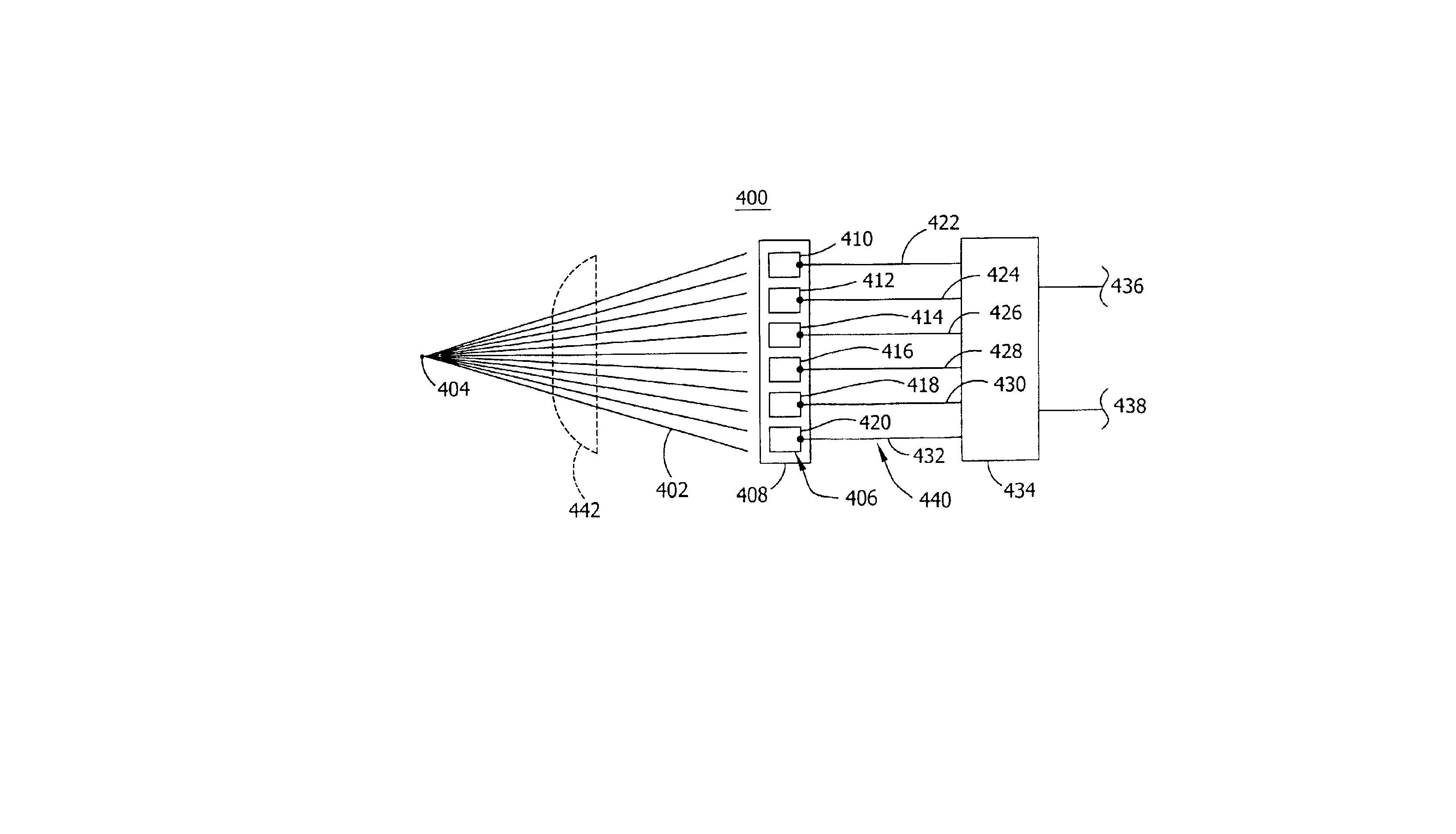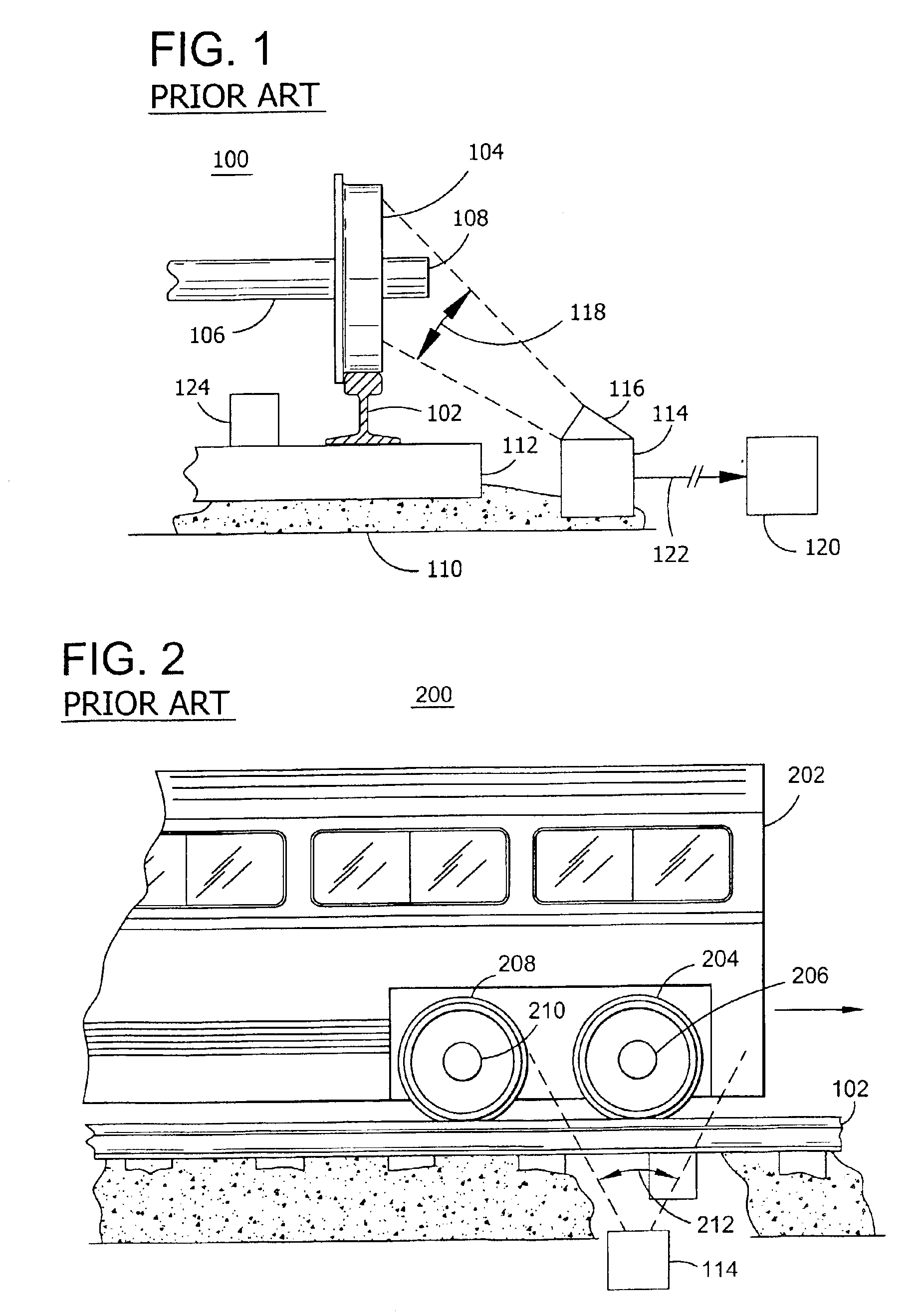Apparatus and method for detection of railroad wheel and bearing temperature
a technology of bearings and apparatus, which is applied in the direction of optical radiation measurement, instruments, sensing radiation from moving bodies, etc., can solve the problems of increasing the voltage or current generated by the detector, the limitation of the detector to identifying the intensity or power, and the limitations of prior art systems, so as to improve the operation of the railway system, improve the detection effect, and reduce the instances of false heat detection
- Summary
- Abstract
- Description
- Claims
- Application Information
AI Technical Summary
Benefits of technology
Problems solved by technology
Method used
Image
Examples
Embodiment Construction
Referring to FIG. 1, a prior art hot wheel or bearing detection system 100 is located near a railroad rail 102. A railroad track is comprised of the railroad rail 102 and a crosstie 112 that is mounted on an earthen structure 110 such as gravel. Rail 102 is mounted on a plurality of crossties 112. A railway vehicle (not shown), includes one or more axles 106 which are connected to wheel 104 by bearing 108. As the railway vehicle moves, wheel 104 traverses rail 102. A hot wheel or hot bearing detector 114 is located in close proximity to rail 102 such as to enable detector 114 to detect a temperature range or a temperature of the wheel 104 or bearing 108 of a railway vehicle traversing rail 102. Detector 114 is configured with a scanner 116 that collects the heat generated by objects within the detection zone 118. Wheel sensor 124 is located inside of rail 102 to detect the presence of a railway vehicle or wheel 104 and axle 106 above the wheel sensor 124. Wheel sensor 124 provides a...
PUM
 Login to View More
Login to View More Abstract
Description
Claims
Application Information
 Login to View More
Login to View More - R&D
- Intellectual Property
- Life Sciences
- Materials
- Tech Scout
- Unparalleled Data Quality
- Higher Quality Content
- 60% Fewer Hallucinations
Browse by: Latest US Patents, China's latest patents, Technical Efficacy Thesaurus, Application Domain, Technology Topic, Popular Technical Reports.
© 2025 PatSnap. All rights reserved.Legal|Privacy policy|Modern Slavery Act Transparency Statement|Sitemap|About US| Contact US: help@patsnap.com



